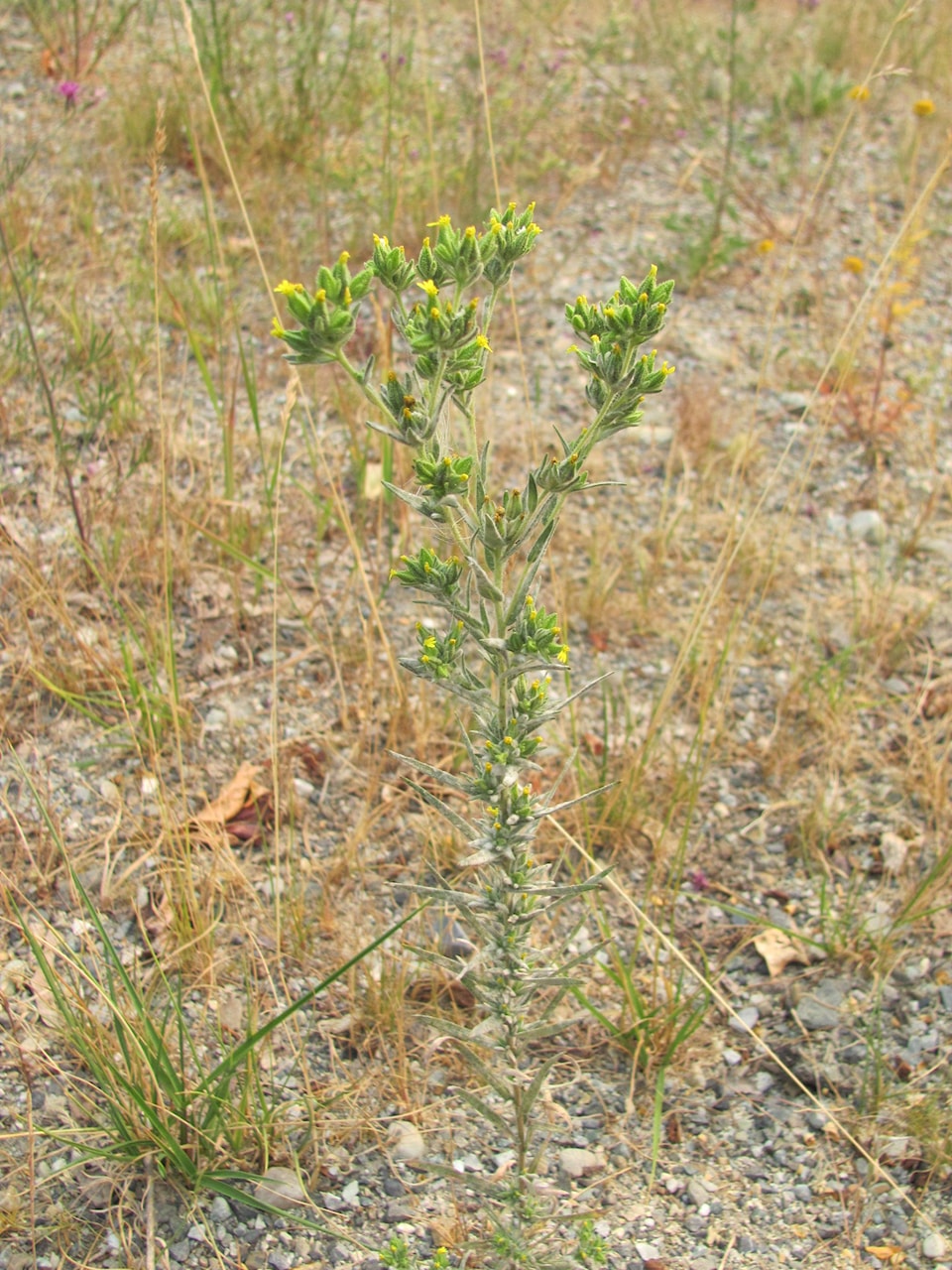Weed Warrior Frank
Last week, I found a hairy, smelly, narrow-leafed, stick-like plant growing on the shoulder of a hairpin corner of an alpine street.It was new to me, so I took it to the Wildsight/EKISC weed-ID event at the Marysville Eco Park, Wednesday evening, August 22.
Serena MacKay, a summer student working for EKISC (East Kootenay Invasive Species Council) who had previously demonstrated great people/teaching skills at our May/June weed presentations to the Cranbrook Gyro Club and the Grade 2/3 class at Gordon Terrace Elementary School, took all of five minutes to find the entry for my mystery stinker in the ‘Other Invasive Plants’ section of the B.C Field Guide to Noxious Weeds.
“Look here! It’s Cluster Tarweed,” she said.
Great detective work, Serena! According to internet sources, Cluster Tarweed is one of a half dozen Tarweed species, of the Sunflower Family, native to B.C. About a dozen Tarweed species are native to western North America.
Some First Nations used Tarweed seeds as food and other parts of the plant for medications.
The sticky glandular hairs on Tarweed leaves act as natural insect traps. Predatory insects have been seen regularly visiting Tarweeds for captured meals.
Since they are late-summer bloomers, Tarweeds are a good source of pollen for native bees.
On the negative side, Tarweeds will invade bare ground and outcompete plants that are less than 30 cm tall.
Tarweeds are also reported to be poisonous to grazing horses, so this native plant will not be welcome on my rural street.
Tarweeds are tap-rooted plants. So, if you decide to keep them away from your property, these small invaders can be easily removed with a digging tool and garbaged.
I did not eliminate the ‘Cluster’ Tarweed plants that I discovered for the first time, last week. There were only a total of 12 individual stems, in two roadside locations, many kilometres from my acreage.
Instead, I chose to report these invasive native plants to EKISC, the RDEK and to you, the readership, for monitoring.
A special thank you to my Weed Warrior teammate Maddie T., with the steady hands, for snapping the best photo of our Tarweed find, which just may be your new neighbour, dear readers.
Now about broadleaf herbicides, of which there are many.
Broadleaf herbicides contain chemicals that kill broadleaf plants, but do not noticeably damage grasses when diluted with water, by the user, to the recommended concentration, before spraying or painting onto the target plants.
I will describe Killex, since it has been available for sale to the general public for decades.
Killex contains three active chemicals. 2,4-D causes uncontrolled growth in broadleaf plants. Mecoprop slowly interferes with plant metabolism and growth over three or four weeks.
Dicamba is toxic to conifers like pine and fir trees. So, Killex should not be used near your flower beds or vegetable garden, or nearer than the tips of the longest branches to the trunk of any of the trees on your property, or to any of the trees on the area you are treating.
Killex is listed, by Scotts Canada, as poisonous, so wear protective gloves, goggles and clothing when handling it and keep pets away from the treated area until the Killex has dried onto the target plants.
Using a broadleaf herbicide, like Killex, is mainly needed for controlling weeds- like field bindweed, hawkweeds, and Canada Thistle that spread by roots and cannot be easily controlled by digging them up the way we handle tap-rooted weeds.
Tap-rooted weeds, like dandelions, should only be controlled with herbicide when there are way too many to pry from the lawn.
